Having Fun With Epic Fantasy #13: We All Love To Love — The Lovable Rogue

Han Solo the quintessential “lovable rogue”
Long before fantasy-dom began adopting anti-heroes as main characters (in my mind, Michael Moorcock was an early adaptor, with the Elric novels), the “lovable rogue” was an established, some would say essential part of the canon.
Very often, the lovable rogue overlaps with the sidekick, characters that (as discussed in Post #12) sometimes morph into central, point-of-view (pov) protagonists in their own right. The single best example I can think of when it comes to both archetypal lovable rogues and assuming greater importance within the story, is Han Solo in Star Wars.
In the best lovable rogue tradition, he’s cynical and mercenary and out for himself—until the chips are down, at which point he comes through for his ‘band of brothers.’ He also has considerable charm and a similar “broth of a boy” mojo to Shakespeare’s Mercutio, although not quite so manic. (While duly noting that Mercutio is not in the fantasy genre.) Most importantly, viewers love him — also in keeping with the lovable rogue tradition — an enthusiasm that gave Han Solo a prominent place in the initial film trilogy and the Stars Wars canon.

Loki, from Marvel’s “Thor”
So why do we love the lovable rogue characters, pretty much wherever they appear? I believe it stems from the strong overlap to both the ‘sidekick’ and ‘band of brothers‘ traditions, although the rogue can, of course, also be the main character. (They may also end being heroes, but it’s not the way they primarily present.)
Their appeal is also strongly grounded in the trickster archetype, which is ancient, and based on a pantheon of gods, heroes, and folklore characters. Loki is one of the most famous, along with the North American Coyote, and Polynesian Maui. Puck features in English folklore (and Shakespeare), while in Greco-Roman myth we have both the god, Hermes/Mercury, and that wily seafarer, Odysseus/Ulysses. Just to name a very few examples!
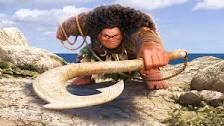
Maui, in Disney’s “Moana”
The trickster pantheon can be capricious and cruel, and they’re frequently up to no good, from mischief to outright wrongdoing, but when the chips are down they also come up with cunning plans to either aid the hero(es) or outright save the day. In my view, the trickster celebrates the attributes of cleverness, wiliness, and cunning that are a significant part of humanity’s competitive advantage in the universe. Much as we admire strength and courage, sincerity and idealism, we recognize that guile and invention are equally, if not more, significant if a ‘band of brothers’ is to carry the field and the day.
In part because they are so tricksy (which as Loki’s relationship with his Asgard peers illustrates, can be annoying at best) the rogue must also have lovable qualities: like their wiliness and wit, it’s a survival trait. So they are not infrequently charming and quixotic in their loyalties (such as they are), as well as useful in a tight corner. Sufficiently so to ensure their companions put up with their less endearing qualities and keep them around.

Enfants terribles
Another element that I believe makes the ‘lovable rogue’ character both enduring and endearing is that they reflect our humanity, i.e. they’re so clearly not perfect. We see this with Merry, and particularly Pippin in The Lord of the Rings.
They are the closest to lovable rogues among the fellowship, although they’re more in the nature of enfant terribles: more mercurial and irresponsible sidekicks than steadfast Sam, but far more human and relatable than the noble but overburdened Frodo.
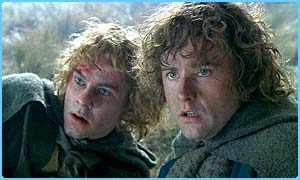
Even enfants terribles must grow up
Merry and Pippin also supply another appealing aspect of the lovable rogue — the redemption arc. Both, but particularly Pippin, have to give up their careless ways and come through for the fellowship and their friends, just as Han Solo comes through at the end of the first-made Stars Wars film.
The lovable rogue provides audiences, whether readers, viewers, or listeners, with the reassurance that redemption is possible, while at the same time epitomizing all we may frequently long for in terms of being footloose and without a care (or, not infrequently, terribly many moral scruples) in the world — in itself epitomized by Spike, in Buffy The Vampire Slayer.
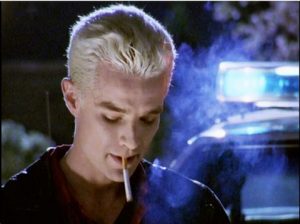
Spike arrives in Sunnydale…
But maybe, as audience, we also quite like that feeling of moral superiority the lovable rogue affords, whereas with the heroes we may admire and aspire, but feel that such a high level of courage and integrity is beyond our everyday grasp.
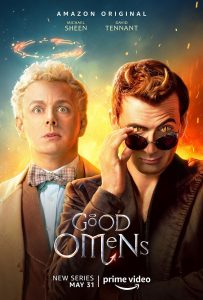 So, having talked Han Solo and Spike, along with Merry and Pippin, some of the lovable rogues that populate the pages of fantasy literature include:
So, having talked Han Solo and Spike, along with Merry and Pippin, some of the lovable rogues that populate the pages of fantasy literature include:
- Anansi: Anansi Boys by Neil Gaiman
- Crowley: Good Omens by Terry Pratchett & Neil Gaiman
- Diarmuid: the Fionavar Tapestry by Guy Gavriel Kay;
- Eugenides: The Queen’s Thief/Attolia series by Megan Whalen Turner
- Fred and George Weasley: Harry Potter by JK Rowling;
- George Cooper (literally “the Rogue”): in the Alanna series and Tortall world, by Tamora Pierce;
- Ghislain Zarene: Mortal Fire by Elizabeth Knox
- Jimmy the Hand: in Raymond E Feist’s Midkemia novels (Jimmy is also an example of a sidekick that graduated to POV character in the prequel novel co-authored with SM Stirling);
- Jobber: the Queen’s Quarter/Oran quartet by Midori Snyder
- Lila Bard: A Darker Shade of Magic by VE Schwab
- Livak: Thief’s Gamble by Juliet McKenna
- Locke Lamora: the Gentlemen Bastard series by Scott Lynch’s;
- Luke: Eight Days of Luke by Diana Wynne Jones (Spoiler: Luke is really Loki, so the lovable rogue part goes without saying);
- Matt: the The Wheel Of Time series by Robert Jordan;
- Master Shoka: The Paladin by CJ Cherryh
- Nahri: The City Of Brass by SA Chakraborty
- Nicholas Valiarde: Song of the Necromancer by Martha Wells’ (nope, it’s nothing to do with Murderbot, sorry — but if you like Moriarty vs Sherlock Holmes…)
- Shallan: the Stormlight Archive by Brandon Sanderson
- Tyrion Lannister has elements of the lovable rogue in A Game Of Thrones by George RR Martin;
- Vlad Taltos: in the series of the same name by Steven Brust;
- Westley, the Dread Pirate Roberts: The Princess Bride by William Goldman
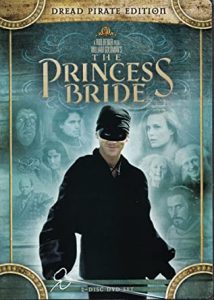
The Dread Pirate Roberts
That’s just an off-the-top-of-my-head list, although it’s still just a sampling: I’m sure you can think of many more to add. 🙂

Faith, also a vampire slayer — & a rogue
But Where Are The Women?
In doing so, I hope you will have a few more women’s names to add to my list. Currently there are only 5 out of 21 in the running and no pics — although I’m about to remedy that! In case you’re wondering, they’re Shallan, who certainly has a rogue alter ego; Jobber; Lila Bard, Livak, and Nahri.
All of which led me to search a little more widely on the internets, where the cited lovable rogues, like their templates in myth, legend, and folklore, are overwhelming male. Initially, I struggled to think of a TV show or film contender in the Fantasy genre, but then, fortunately, I remembered Faith from Buffy. And although Faith is also a superhero, she also fits the “(mostly) lovable rogue” mould.
It did make me think, though, because the lovable rogue isn’t a prominent female archetype: traditionally (ie in fairytale and myth, folklore and legend) women rogues are either outright villains, or debased by their roguery. And when women feature on the positive side of the storytelling ledger, there doesn’t appear to be a lot of scope for roguery, however lovable. I suspect this may reflect on the extremely narrow place occupied by women in traditional societies — a narrow scope reflected in storytelling and with no “halfway” houses, such as the “lovable rogue”, between “good” and “bad.”
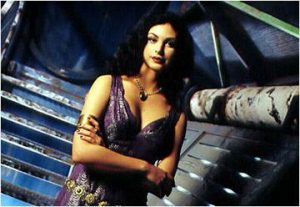
Inara: a ‘companion’ with a heart of gold…
The female archetype that comes closest to the “lovable rogue” is the “whore with the heart of gold”, with contenders such as Gaie Sebold’s Babylon Steel, along with Elizabeth Bear’s Karen Memory, who is definitely a whore, and something of a rogue, and I think her heart’s in the right place, so I feel *probably* fits the archetype.
Spring Rain, in Guy Gavriel Kay’s Under Heaven, however, is a courtesan and has a good heart, but is not a rogue—which is pretty much true of Inara in Firefly, as well.
So as you can see, there’s plenty of scope to come up with more examples in the comments, both of female “lovable rogues”, and “whores with hearts of gold.” If I’ve considered them but feel they don’t fit, we may even have a conversation. 😉
And As For My Own Books…
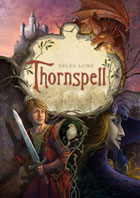 In this Having Fun post series, I always end with a quick look at my own books, so I won’t break tradition. 🙂
In this Having Fun post series, I always end with a quick look at my own books, so I won’t break tradition. 🙂
Although there are no prominent lovable rogues in Thornspell, Sigismund’s acquaintance-cum-friend, Ban, skirts this territory among the secondary characters. So, too, do the horse-copers, Fulk and Rafe.
The minstrel, Haimyr, presents as an archetypal lovable rogue in The Heir of Night, and several sidekick characters in The Gathering of the Lost also overlap the lovable rogue, chiefly Raher and —of course!— the hedge knight, Raven.
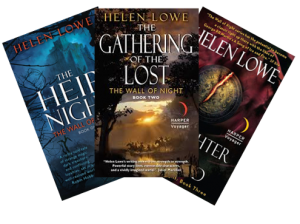
I did, briefly, consider Malian herself, because of her Shadow Band training and facility for illusion and disguise, but although she can be both “dark and light”, Malian is far too steadfast in her duty to ever qualify as a rogue, lovable or otherwise.
The guard, Dab, may have some of the lovable, enfant terrible characteristics in Daughter of Blood, but he’s definitely not a rogue. And although he’s a broth-of-a-boy, Mercutio style, neither is Tirael of Stars. The only character I believe really qualifies as “lovable rogue” in Daughter is the Sword warrior, Kelyr. Unless, of course, I count the warhorse, Madder—but “lovable and/or faithful animal companion” is another archetype and therefore another post. 😀
Conclusion:
 For today, I’ll leave you with a recap of my thoughts on Master Shoka, from CJ Cherryh’s The Paladin:
For today, I’ll leave you with a recap of my thoughts on Master Shoka, from CJ Cherryh’s The Paladin:
“The character of Shoka … is a patchwork of experience and disillusion, self interest, guile, and reluctant integrity, that is perhaps best ‘caught’ by a companion’s summation toward the end of the book: “It was him, in all that glitter. Same eyes, same mouth. Same conniving scoundrel.” “
—
Previous Entries In The ‘Having Fun With Epic Fantasy Tropes” Series:
Introduction: Having Fun With Epic Fantasy—Meet the Tropes
Instalment 1: Having Fun With Epic Fantasy Tropes: A Farm Boy/Gal Goes On A Journey…
Instalment 2: A Prince/Princess Finds A Destiny
Instalment 3: Dreams and Portents, Prophecy and Destiny
Instalment 4: “Apocalypse Now”
Instalment 5: Meet The Big Bad
Instalment 6: The Sweep Of Time & Its Twin, War Without End
Instalment 7: Fortunately There was A Portal
Instalment 8: We’re All Going On A MacGuffin Hunt
Instalment 9: Artefacts of Power—And Doom—And Where To Find Them
Instalment 10: The Alchemy Of Numbers
Instalment 11: The Mentor
Instalment 4: The Sidekick
—
On SF Signal: The “Having Fun With Epic Fantasy” Series
1. “Making the Grand Tour” (aka the Road Journey);
2. .”The “Band of Brothers”; and the
3. . “Soul-Sucking Sword.”
---
© Helen Lowe


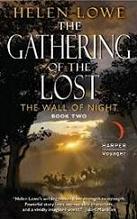
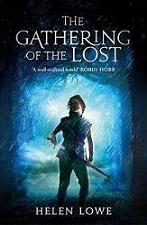
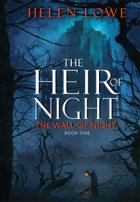
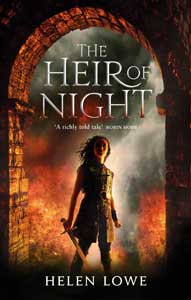


Back in the 80’s I purchased a collection of short stories (Amazon’s 2), which included a story by Phyllis Ann Karr called ” The Robber Girl” . She definitely fits the trope.
Lots of good stories in that collection!
“The Robber Girl” certainly sounds like a character with lovable rogue potential, and an anthology titled Amazons is certainly of interest. I wonder if there is nay overlap between the Robber Girl in the anthology story and Hans Christian Andersen’s “little robber girl” in The Snow Queen?